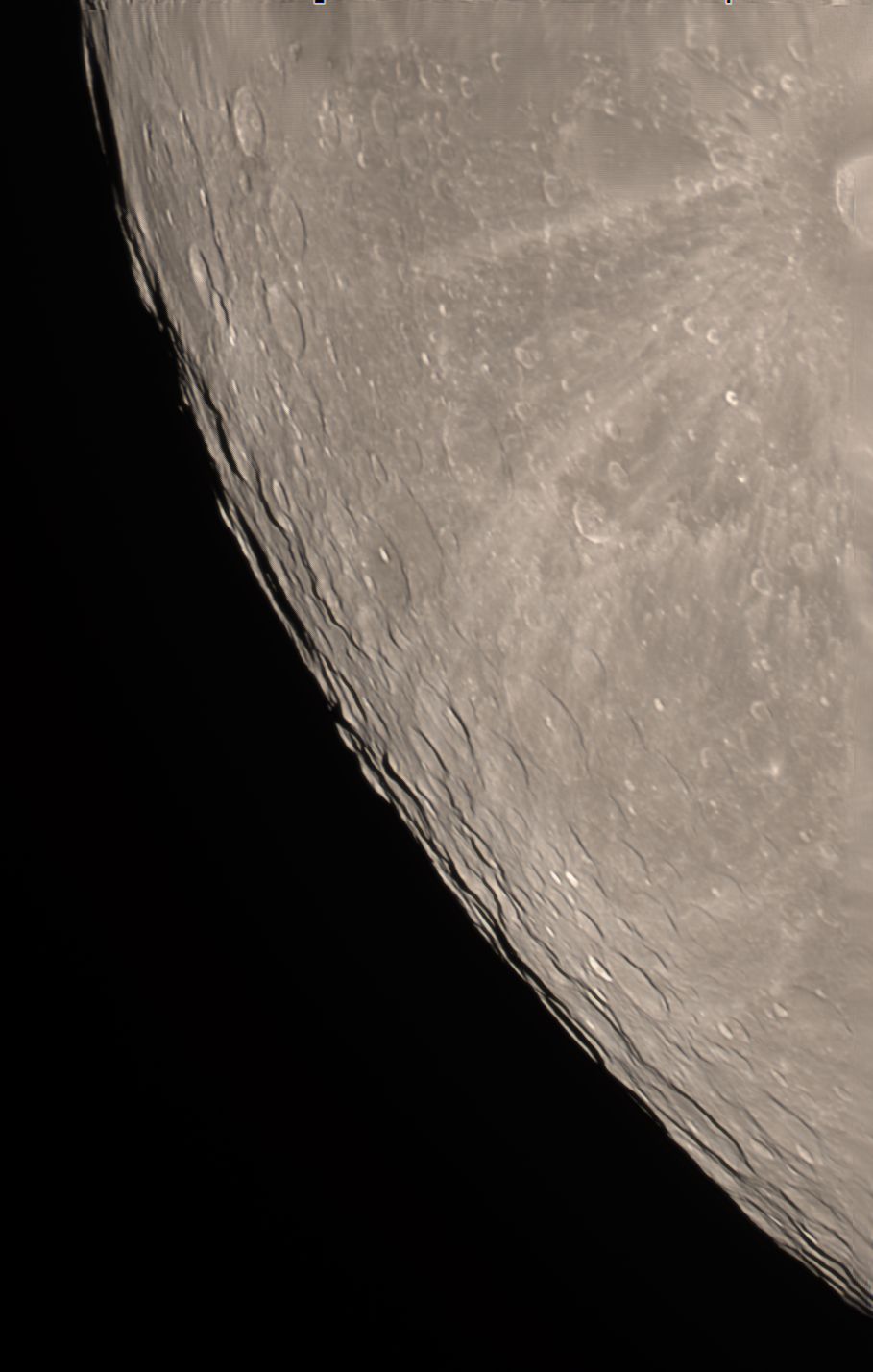Moon


Moon on April 7, 2020, half an hour before midnight. Full Moon? Almost! The second image clearly shows that the Moon is still not 'full'. At its eastern edge, sun rise is ongoing: the ridges of the craters and mountains still cast shadows. Full Moon is still five hours ahead. At that point, shadows will not be seen anymore on the Moon's surface, until a few hours later they will re-appear at its western edge.
The two images were taken 20 minutes apart with the ZWO ASI 178MC, first with the Maksutov-Newton, then with the Televue Pronto. In each case, a video film with 20 frames/s, 20 ms each and a total of 2500 frames were taken, of which 50% have been used for stacking. This way one can overcome the so-called 'seeing', i.e. the wafting and wiggling caused by the turbulence in the Earth's atmosphere.
By the way, it is here that the true colour of the Moon's surface becomes visible: it has brownish colour. One would not see this with the naked eye because the intense moon light always appears white or light-grey.



Moon on 23 March 2021, starting at 22:28, taken with ZWO ASI 178MC at the 14" Dobson-telescope. Videos with 40 frames/s à 25 ms (small cutouts) and with 4 frames/s à 11 ms (large images) were recorded, of which 2% were used for stacking.

